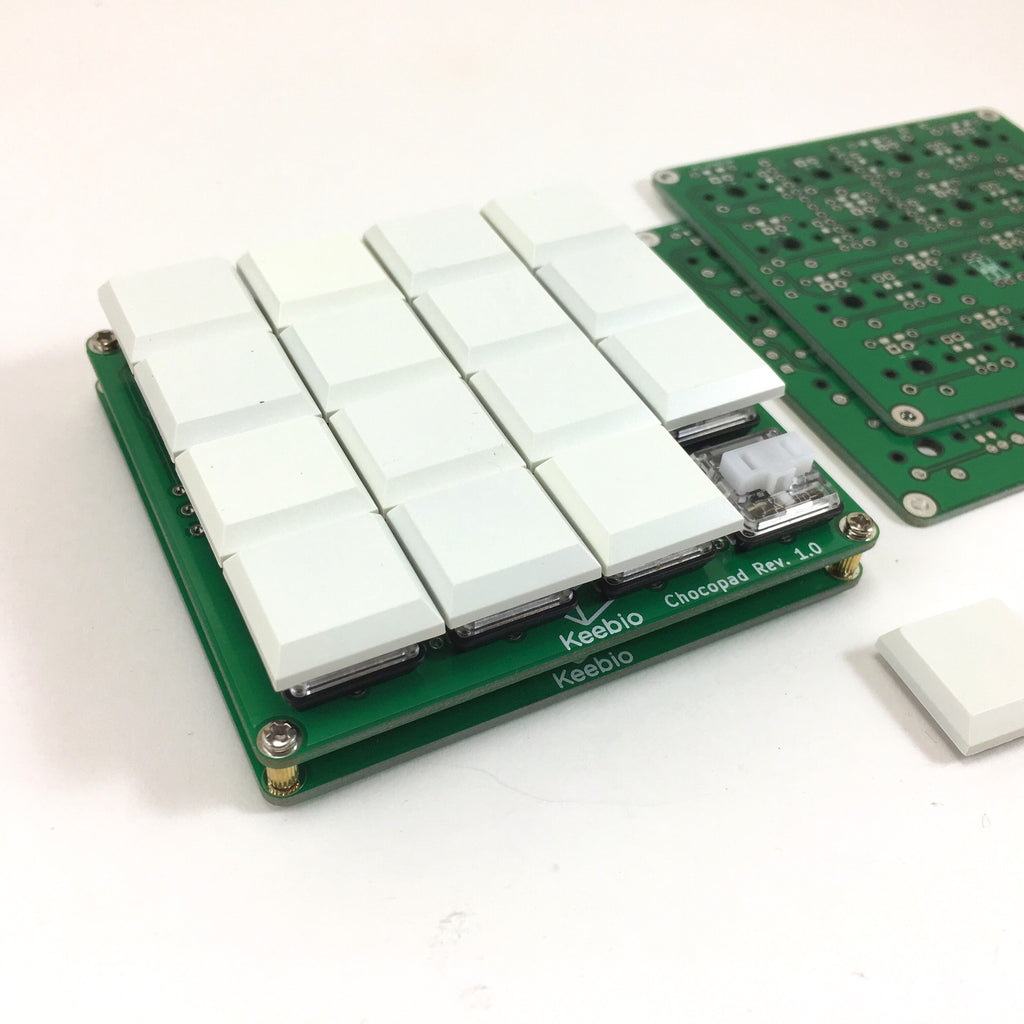We've taken a look at profiles before. matt3o's "Hi-Profile PBT Dye-sub" thread, the /dev/tty design thread, paid close attention to this topic over 43 pages (!) of discussion. viewtopic.php?f=7&t=10805&p=339104&hili ... al#p339104.
The canonical profile demonstration thread is jacobolus's demo set from viewtopic.php?t=9847. This is still interesting since I include a couple of profiles that weren't in his collection.
Below, I explore twenty-three different key cap profiles. In lieu of making testers, I've kept the key caps on the keyboards. You can't type on a tester with two hands.
A note on my setup: I used a Nikon D610 full frame DSLR with ISO 100 selected. The lens was a Nikon 70-200 f/2.8G lens at f/16, 200mm zoom, focused close to the near stop of 1.5m. Shooting in 'A' mode with +-0 EV exposure compensation, exposure time was usually 1.6 seconds. I used a remote shutter release to minimize vibration. I did some minor post processing to equalize color, rotate the photos with the table level, and crop to 4:3.
For consistency, I refer to the "Function" row (Esc, F1-F12) as R0, and move left to right to R5, the modifier and space bar row. One keyboard has a row to the left of (above) R0 which I call R-1. A positive angle slopes toward the typist; a negative angle slopes away. The keyboards are all flat on the table without leveling feet (with one exception). From the typist's position, the three axes in space X is left to right, Y is fore to aft, and Z is height above the table.
Notable omissions include Signature Plastics SA, IBM Beamspring, and some other high profile sphericals, as well as the Apple Desktop Bus keyboard.
Without further ado, let's get to it! These are in no particular order...
Apple Extended Keyboard
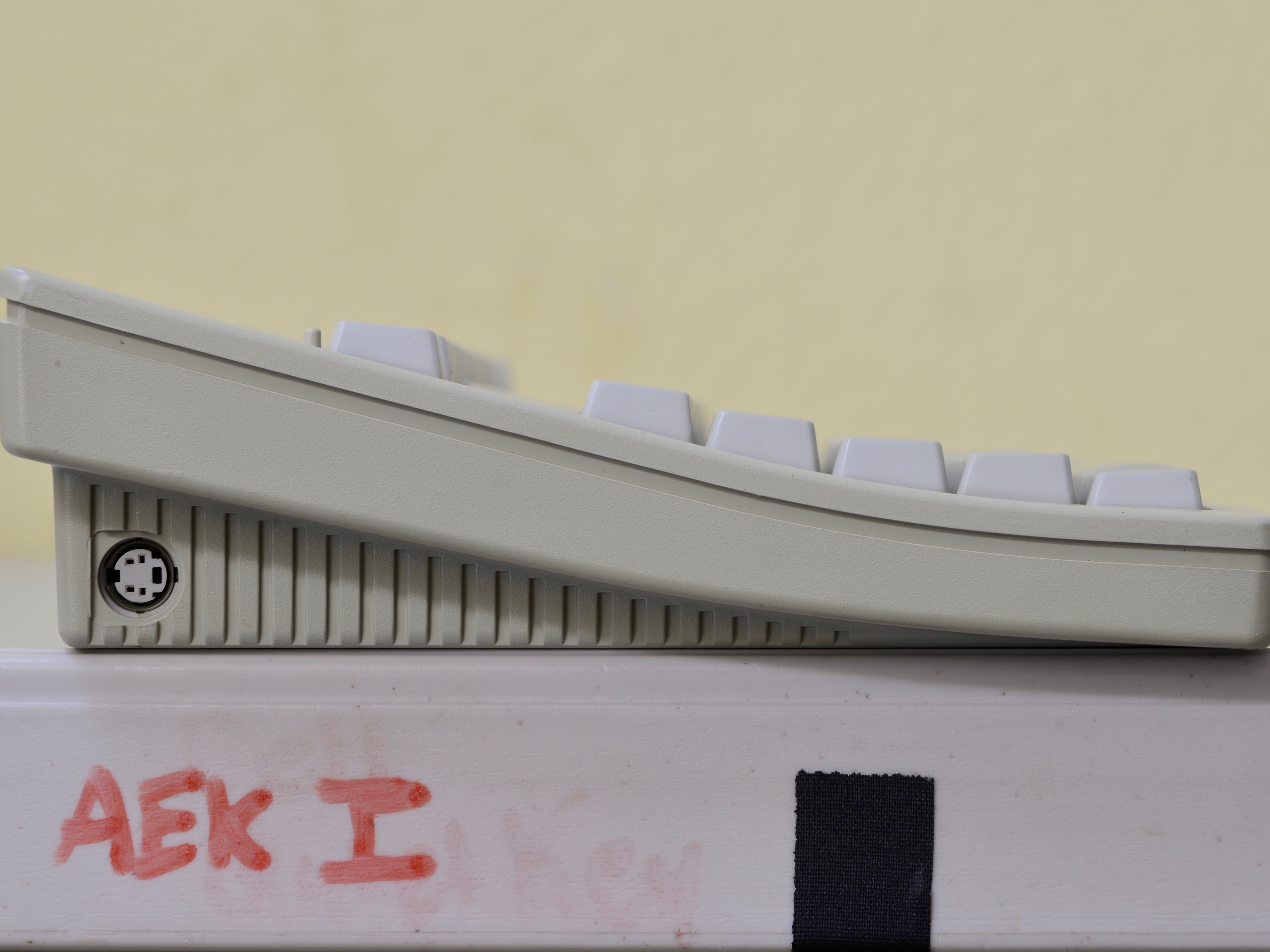
The AEK is a tall monolith of a board. The profile's defining characteristic is positive tilt in R3, a nearly flat R5, and a staggering difference in height between the rows. Clearly Apple had "typewriter" in mind with this one. The AEK and AEK II, strangely, place homing bumps on D and K instead of F and J. Perhaps the thinking was that the middle finger is longer than the index finger and should be the finger to find homing bumps?
Apple Extended Keyboard II
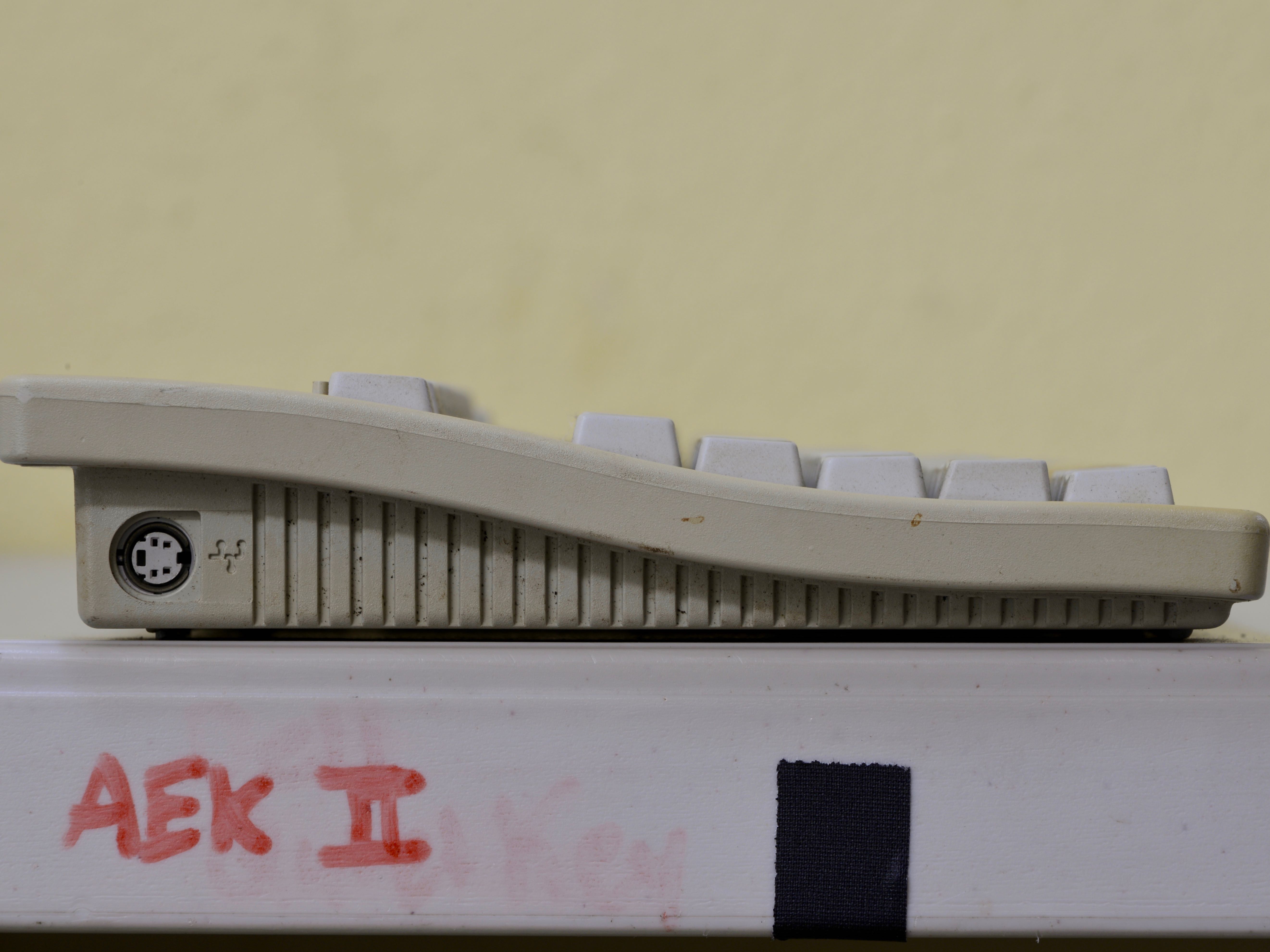
The AEK II is the lower profile successor to the AEK. It uses similar (identical?) key caps, but, the PCB and plate are at a much less positive angle. Like the AEK I, R4 has a fairly shallow slope, and R0 and R1 are pretty far away.
AT101 Bigfoot - SGI, Dell
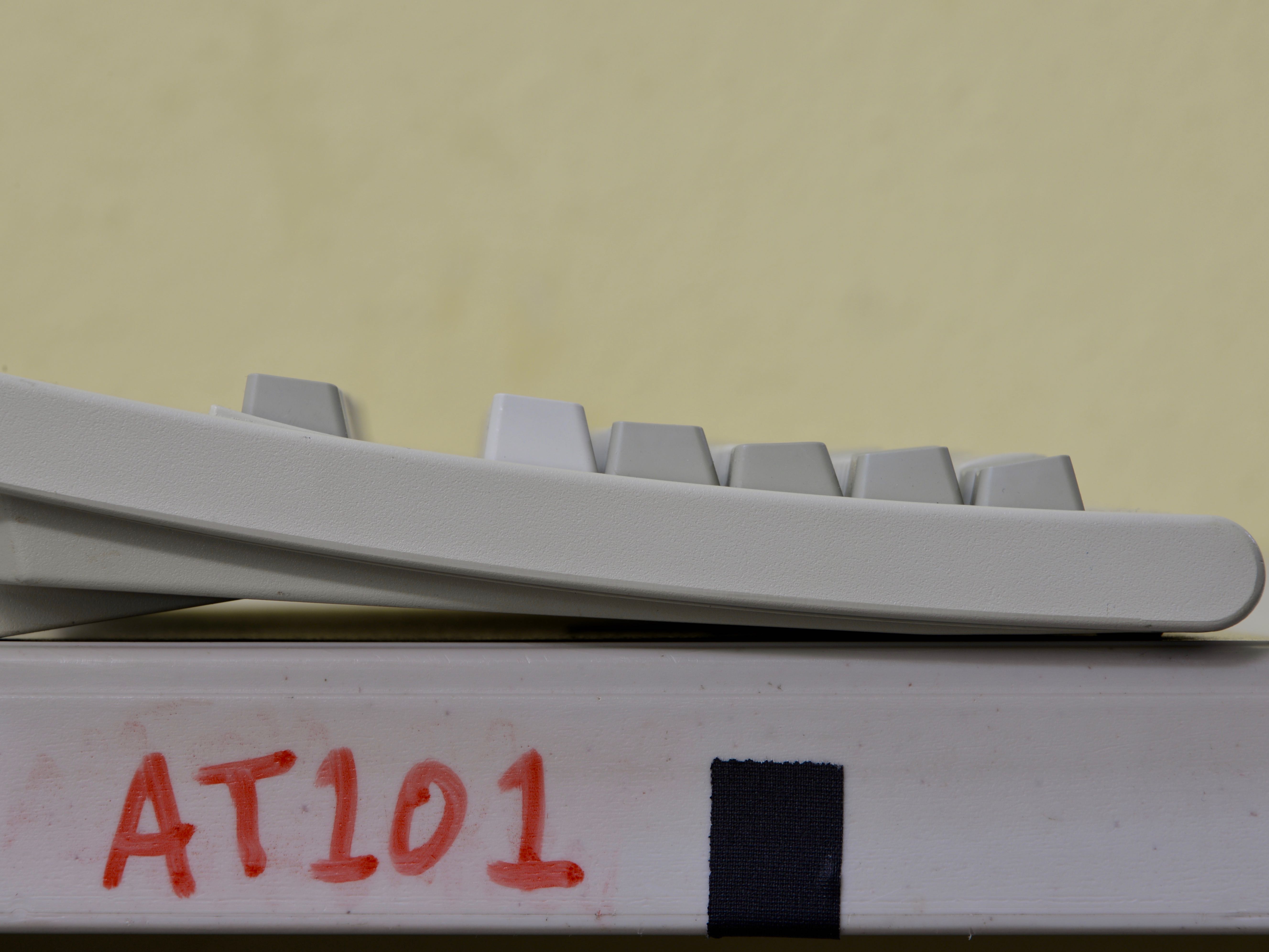
This 90's classic features an R0 that is lower than R1, an R3 with a negative tilt, and an R4 with a moderate negative tilt.
AT101W Bigfoot
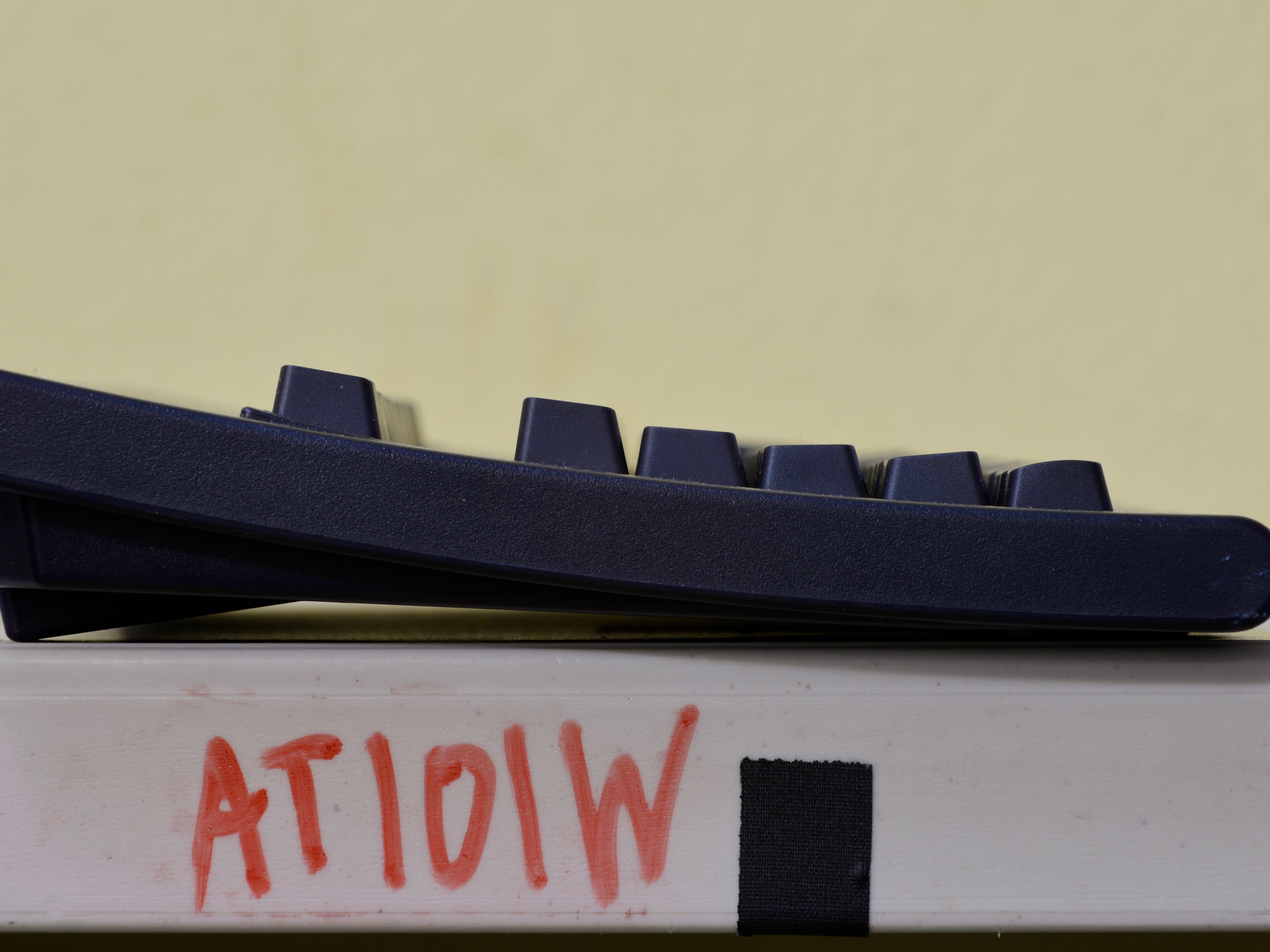
Nearly identical to the AT101, this Dell AT101W has a convex set of modifiers on R5. Some Topre boards do this as well, as does the Dell QuietKey that we'll see a little later. I find that convex keys - like the space bar - are pleasing to type with the thumb.
Signature Plastics DSA
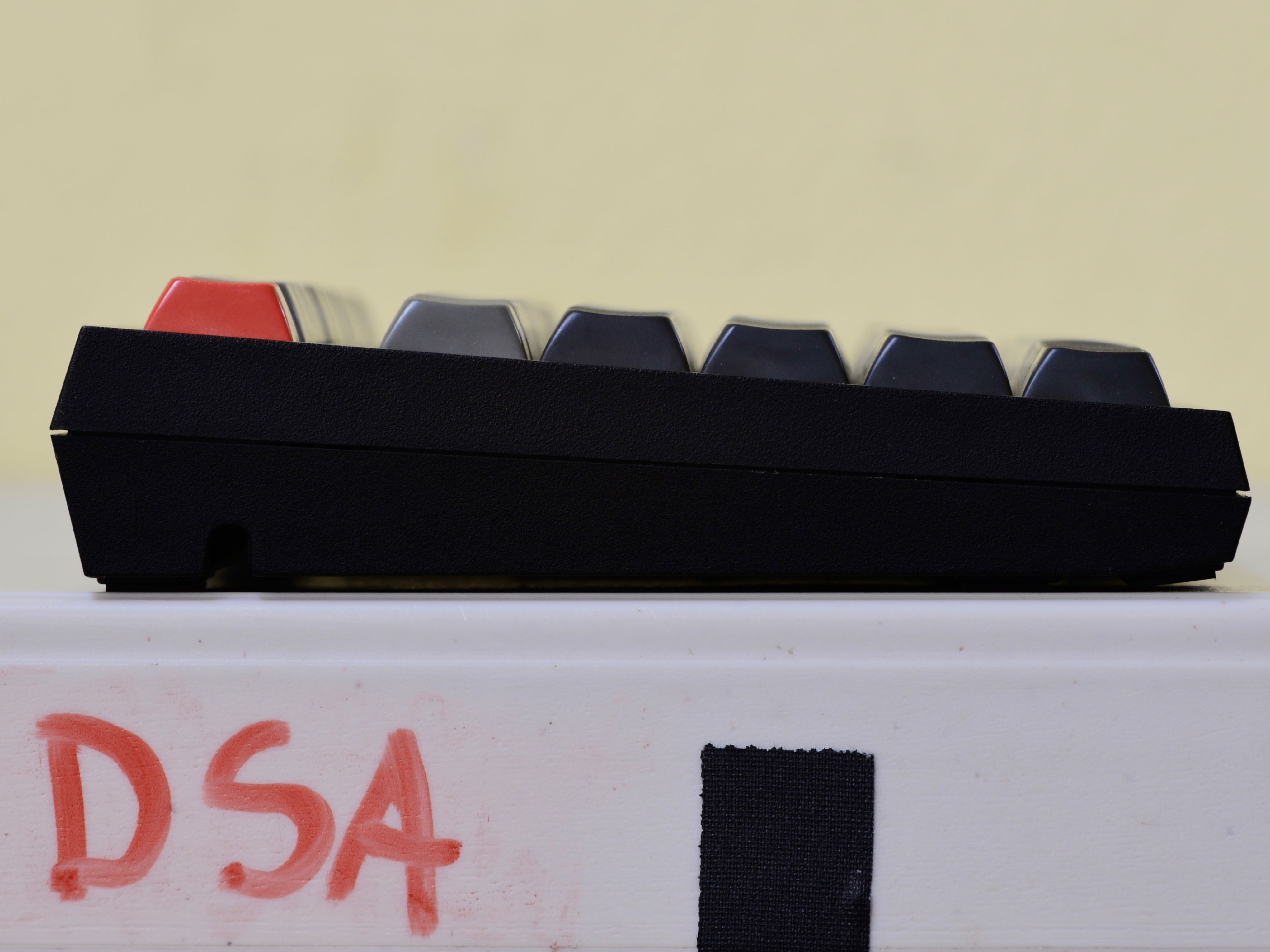
DSA is a flat, non sculpted spherical key cap profile. It is certainly usable - it was my favorite for a short while - but all rows have the same angle. The fingers need to reach further to hit keys on R1 or R5.
Signature Plastics DSS
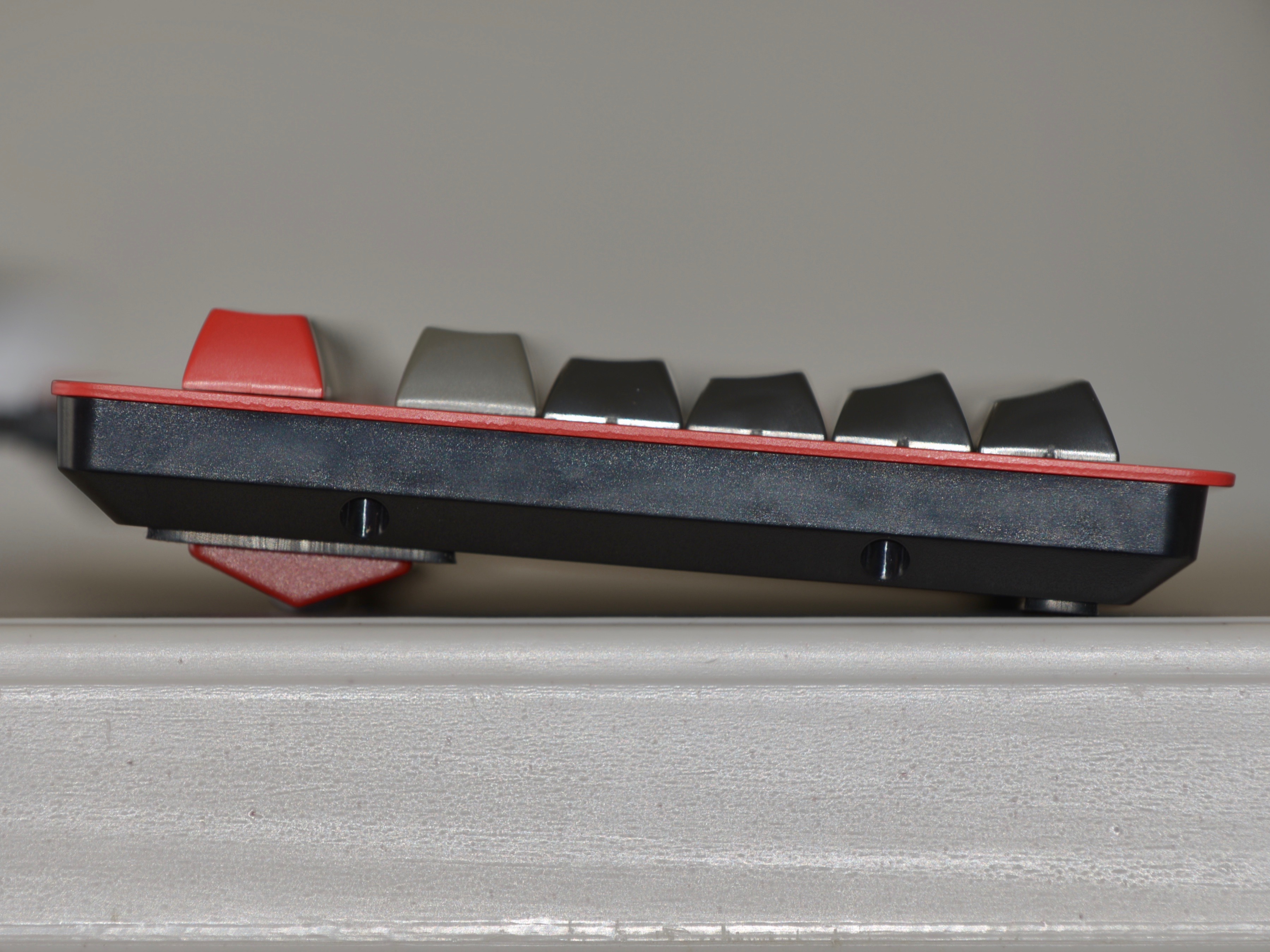
DSS is a brand new spherical key cap profile from Signature Plastics. Note the aggressive negative slope on R3 and R4. I've only ever seen a down slope this aggressive on vintage Alps spherical key caps. The sharp angle at the end of R5 is a mixed bag: while it makes it easier for a finger to press it coming down from R3, sometimes a thumb can catch on the sharp lip. Again, a convex modifier would be ideal here.
Dell QuietKey
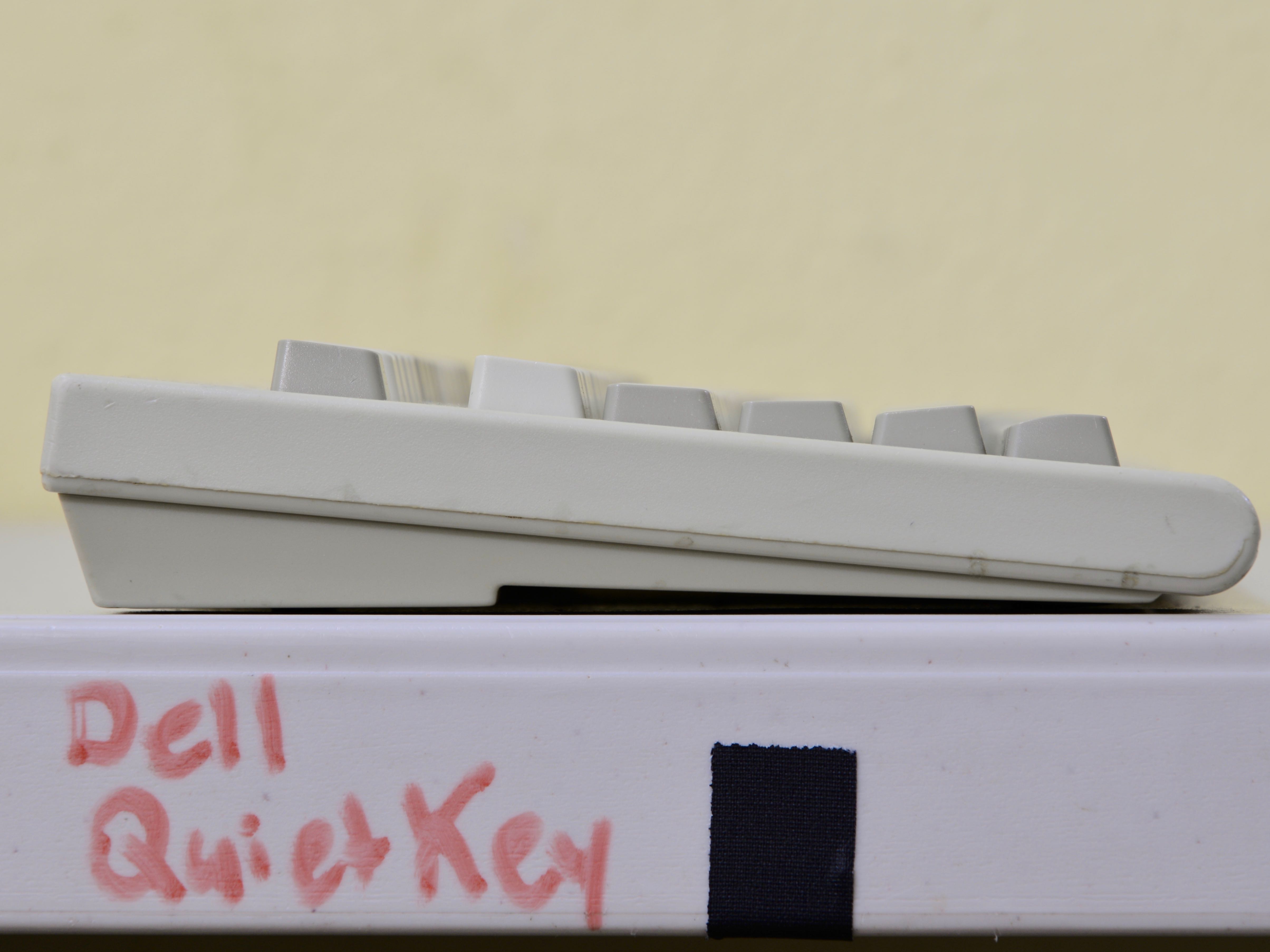
This Silitek-manufactured board uses nearly the same key profile as the AT101W. R4 might be slightly more negatively sloped. Yes, it's a rubber dome keyboard. It uses a discrete buckling silicone dome at each key position. Cleaned and lubed, these are almost Topre like, though you do need to bottom out each press.
Cherry Profile
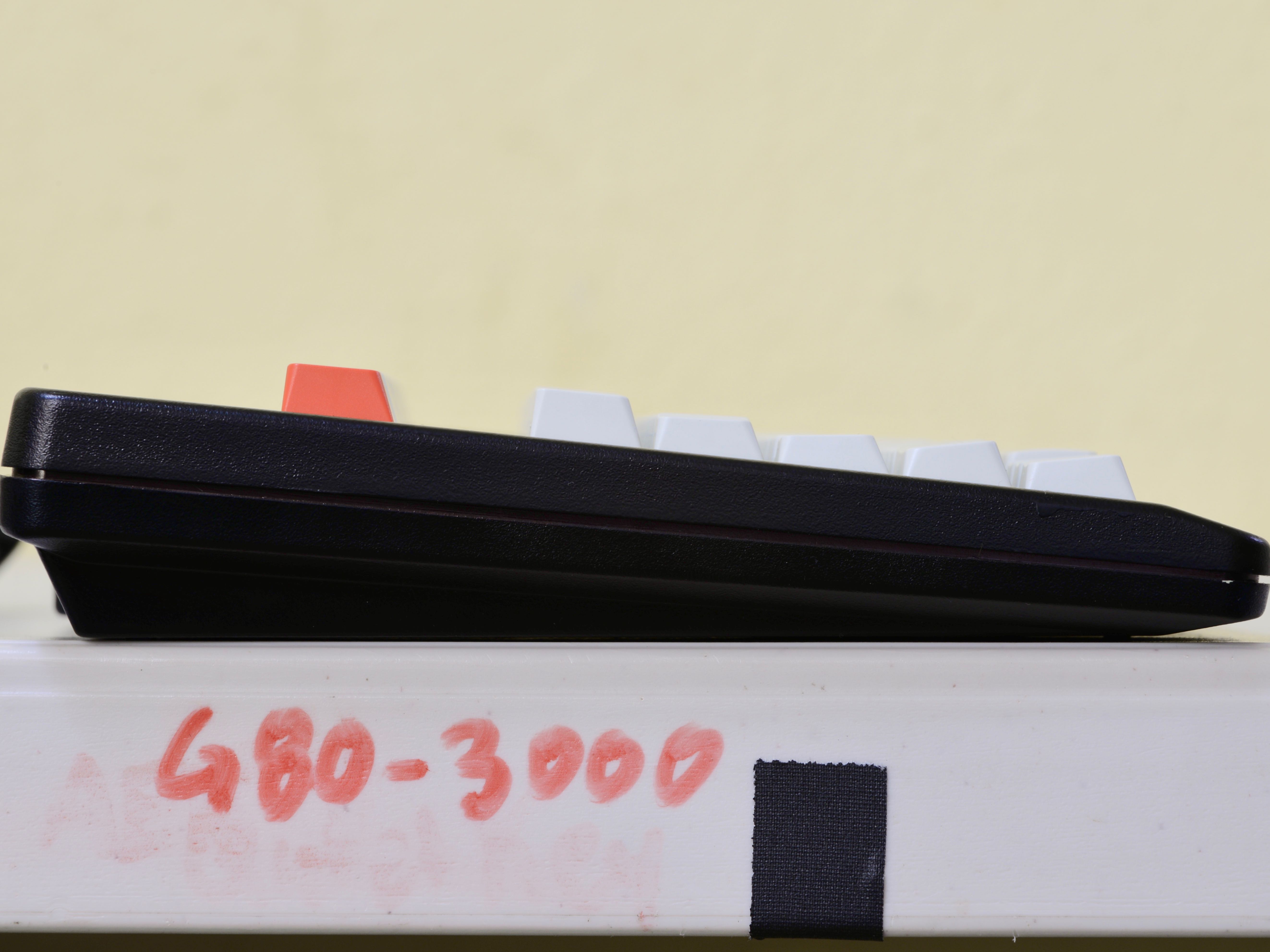
The Cherry G80-3000 ships with Cherry profile key caps. These are a lower profile cylindrical key cap with a particularly short, negatively sloping R3, more aggressively down sloping R4, and more moderate R5. Compared to other profiles, the relatively low Z height of this board gives more placement and adjustment options. Cherry profile boards often have extra deep cylindrical scoops on the homing keys, like F and J.
Cherry Low Profile
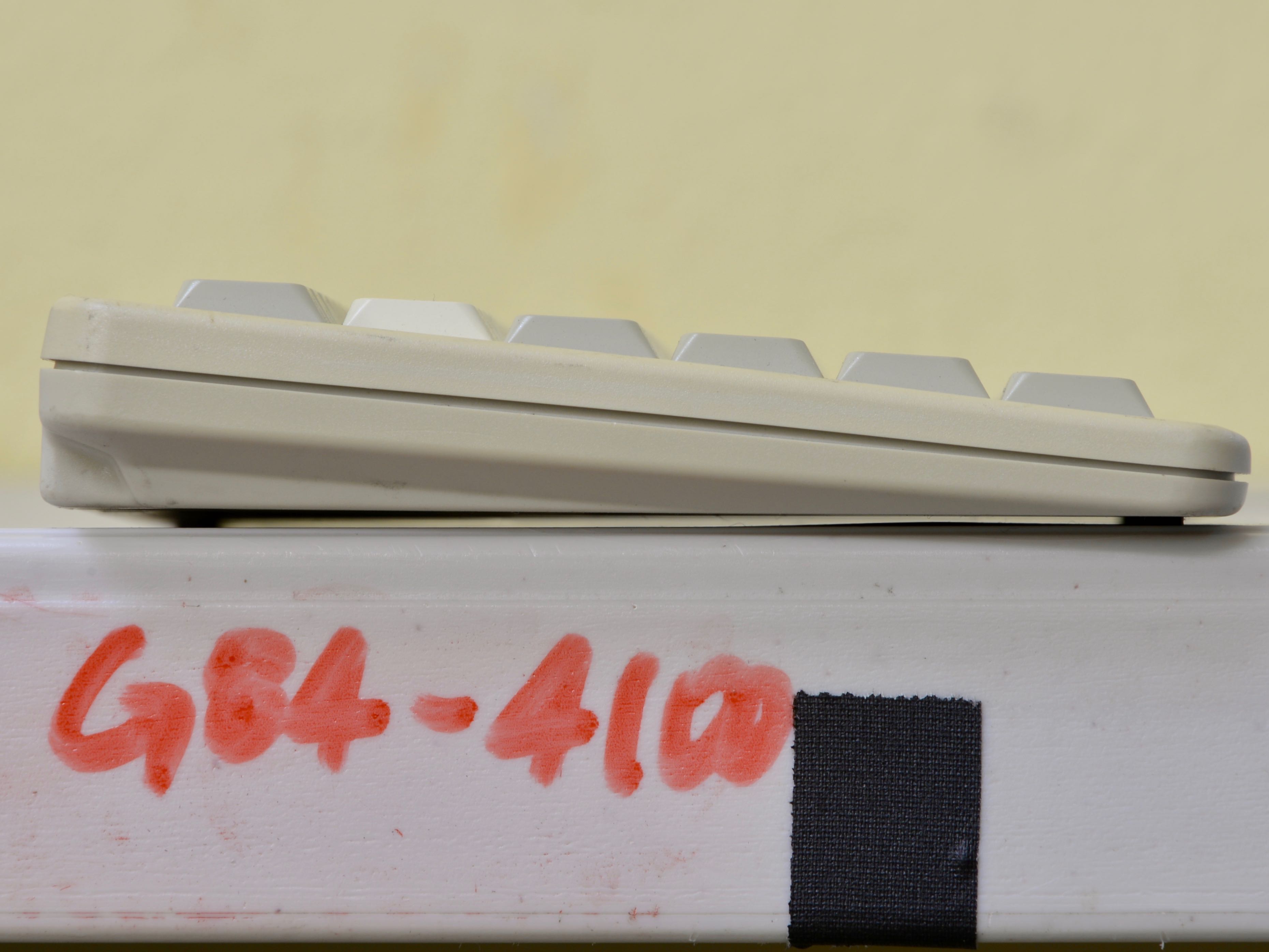
The Cherry G84-4100 uses non-sculpted, low profile, cylindrical key caps.
Topre Profile: HHKB and Realforce
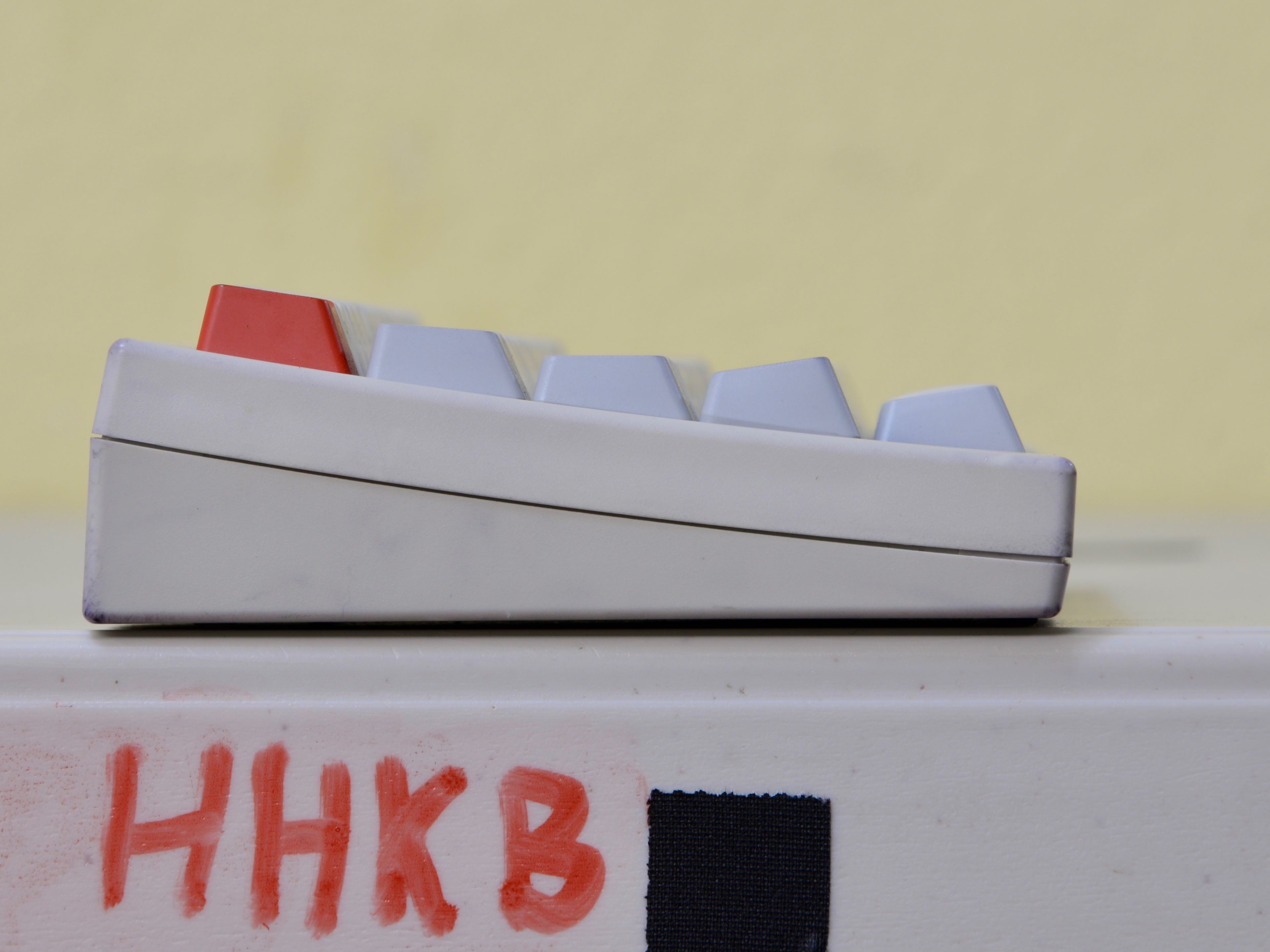
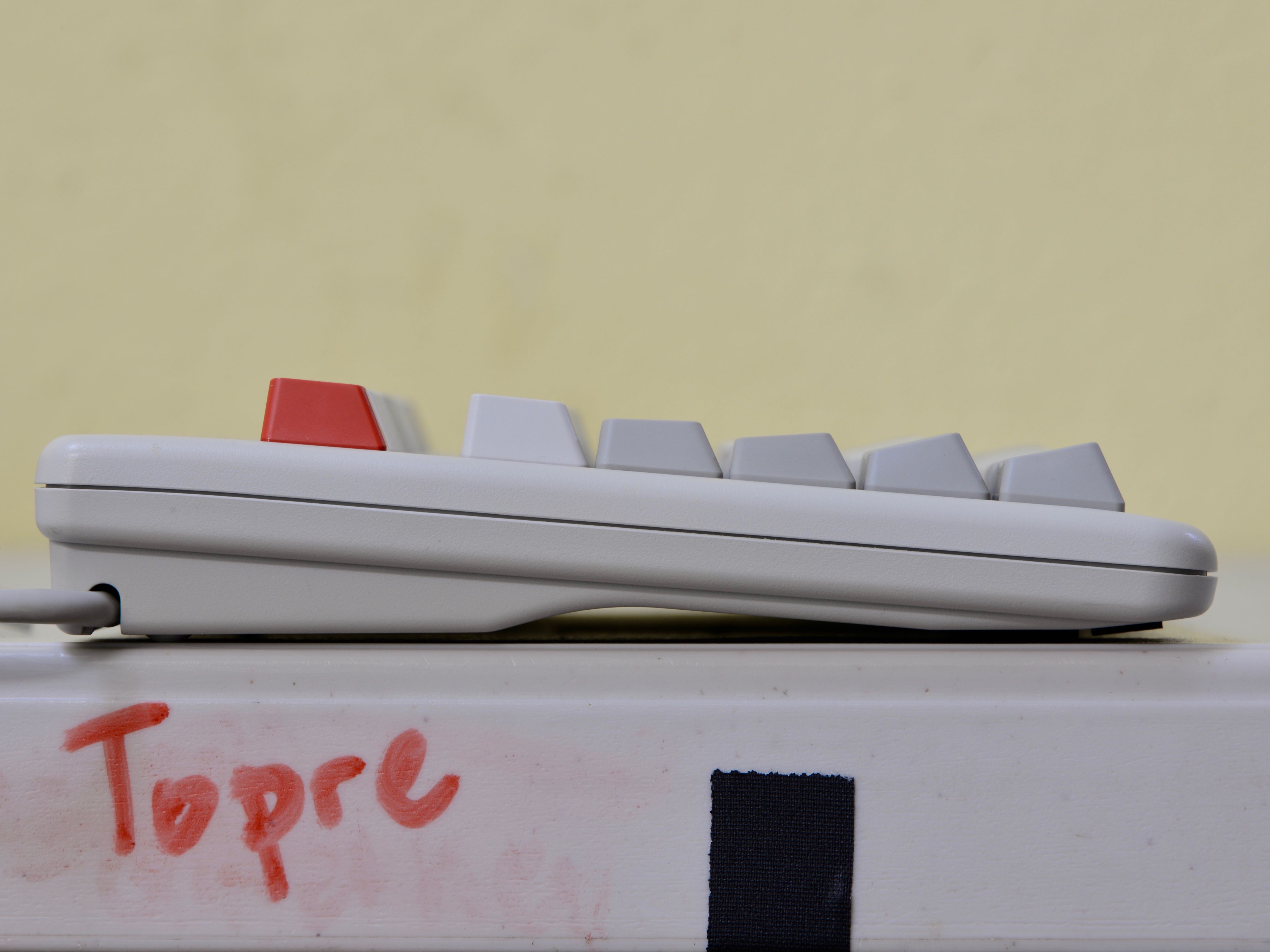
Topre key caps use a particularly aggressive R4. I find this makes it easier to find R4 keys. R2 is only slightly taller than R3, making this an easy transition as well.
Topre High Profile
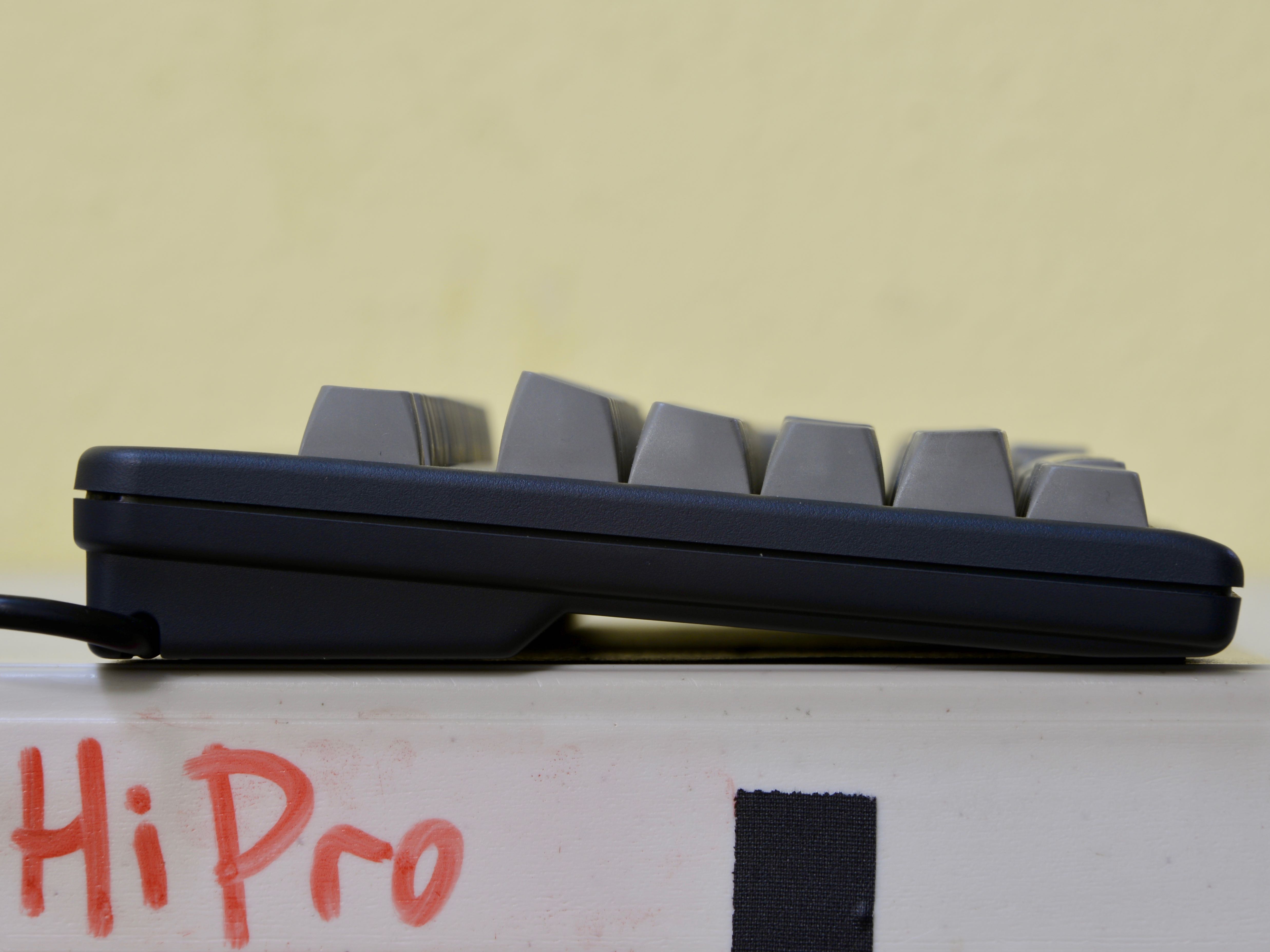
The HiPro uses one of the most aggressive spherical profiles out there. Look at the height of that R1! With that height comes a ton of wobble. It's an odd duck in many ways. R3 has positive tilt and R4 is almost level. R2 is lower than R3. A bunch of keys - S, D, F, J, K, L - all have homing bumps. The spherical tops have a snub inverted pyramidal shape instead of a true sphere. Personally, due to the higher finger contact area on the spherical tops, I find these key caps make the underlying switches feel "lighter". This board feels balanced with 55g Topre domes.
NMB Hi-Tek
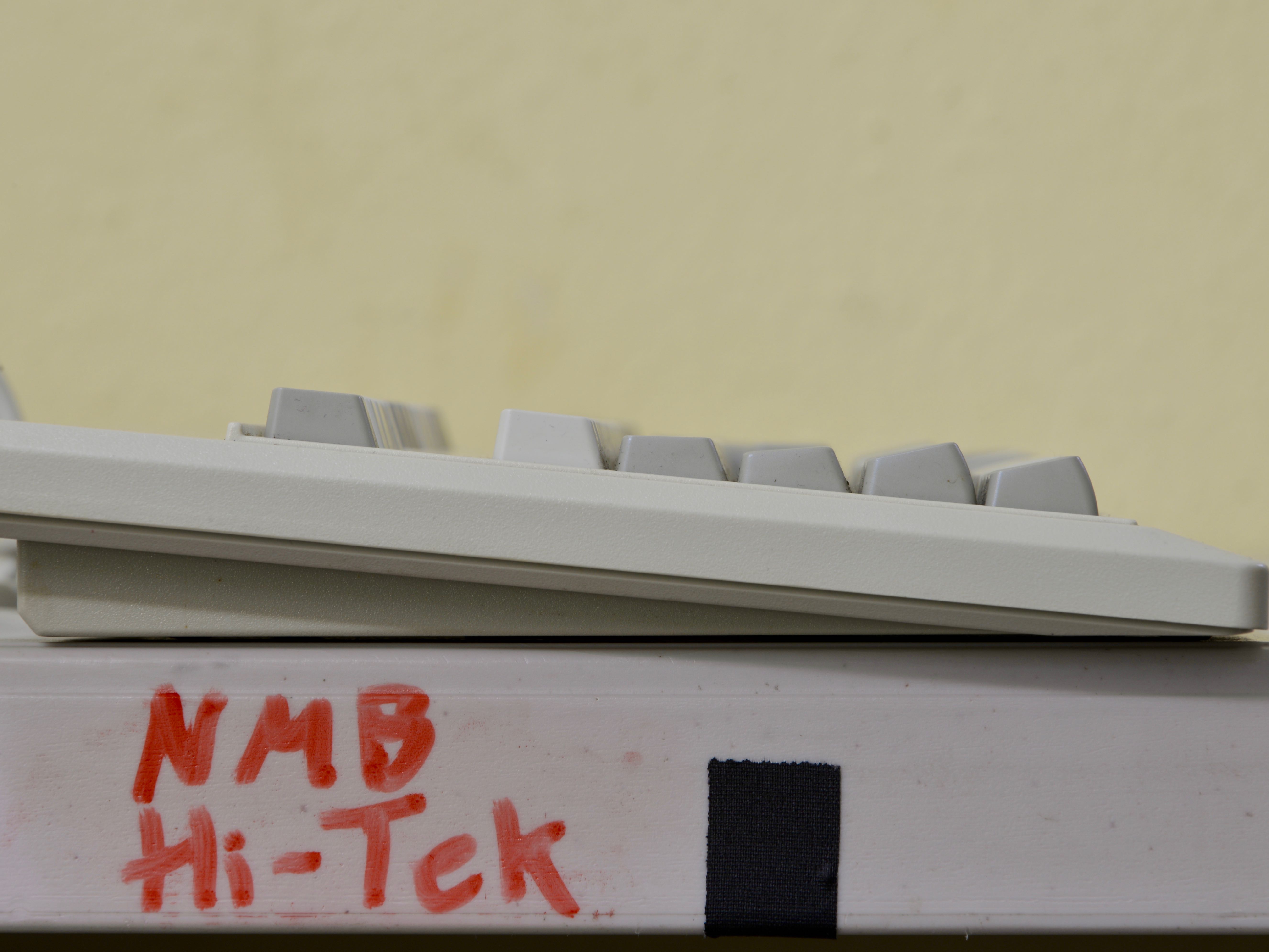
Another Topre-like profile with a short, negatively sloped R3, and a tall, aggressively negatively sloped R4 and R5. This ends up being one of my personal favorites.
IBM/Alps Profiled Spherical
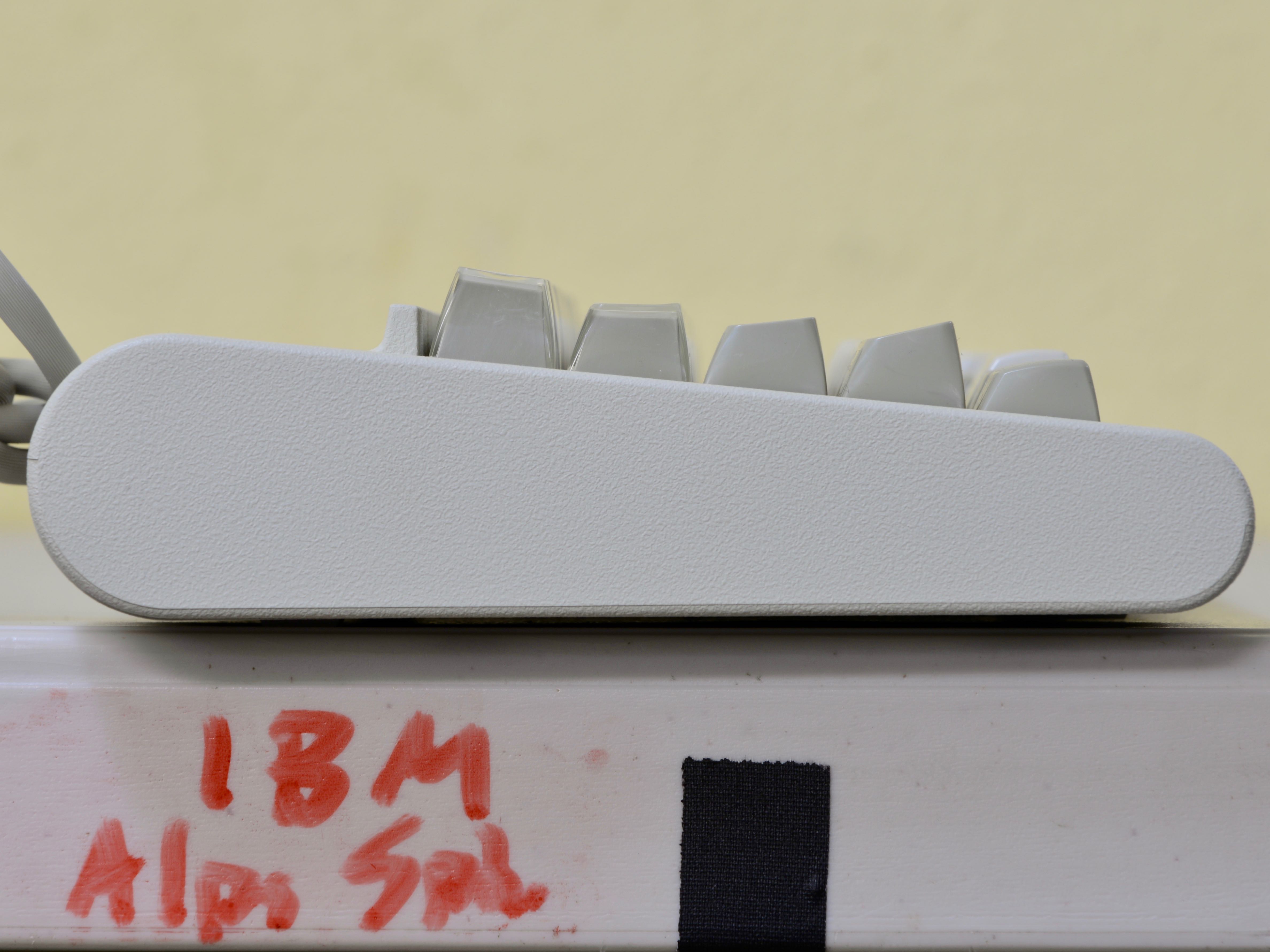
The extreme negative R4 slope award goes to this profile. If you look closely, even R2 is negatively profiled. This board does not have an R0. Note, too, convex modifiers on R5. The only real downside to this profile is the Z height required for the bottom edge of R4. It's almost as tall as the top edge of R1!
matt3o /dev/tty
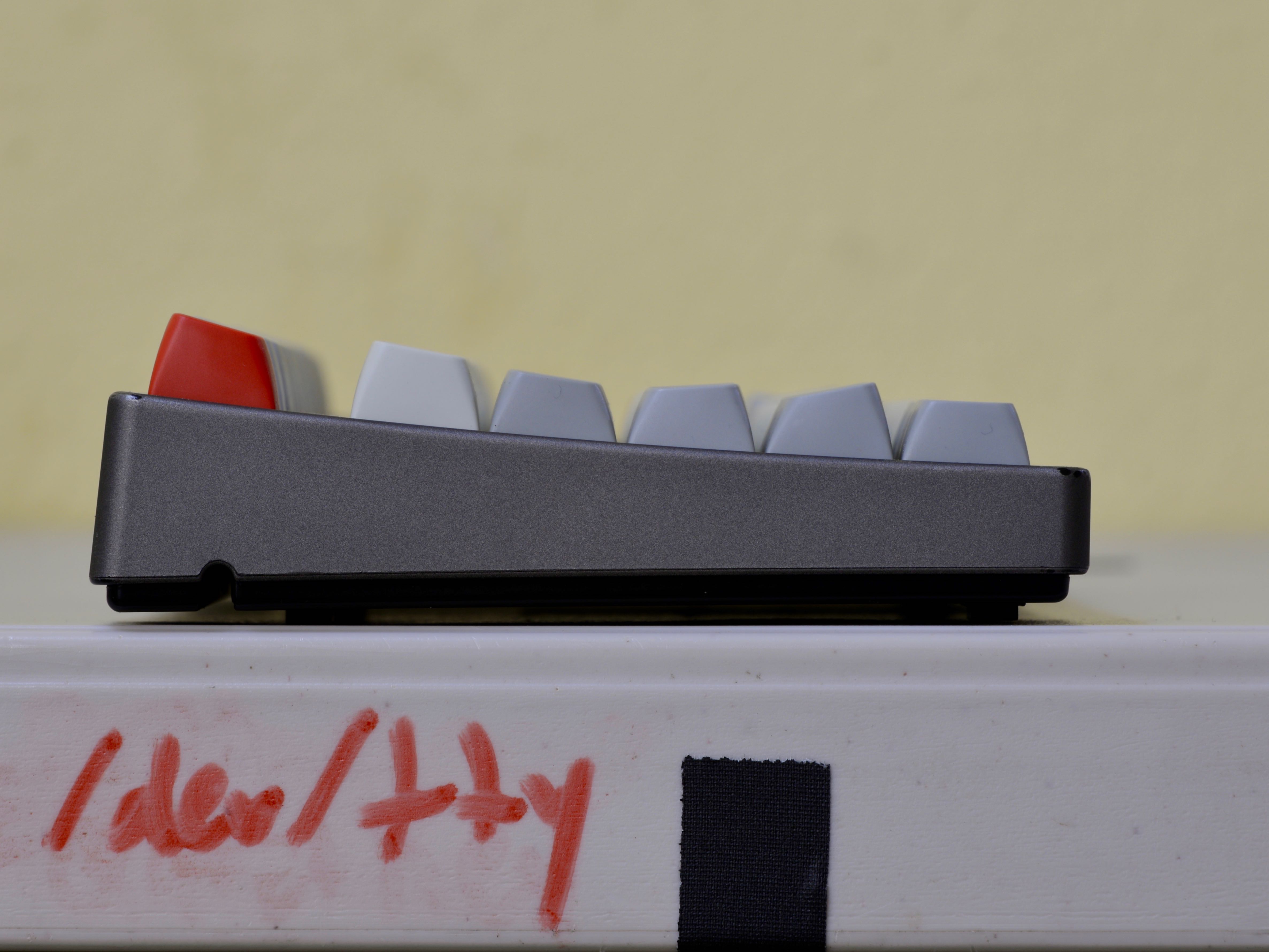
This post would be remiss without a mention of the fantastic /dev/tty. It is a balanced profile that strikes a middle ground between pretty much everything else out there. It is fantastically usable. I do wish the spherical key tops were more spherical and less cylindrical. I'm hoping for convex modifiers in the future.
IBM M6 - 90s Thinkpad Keyboard
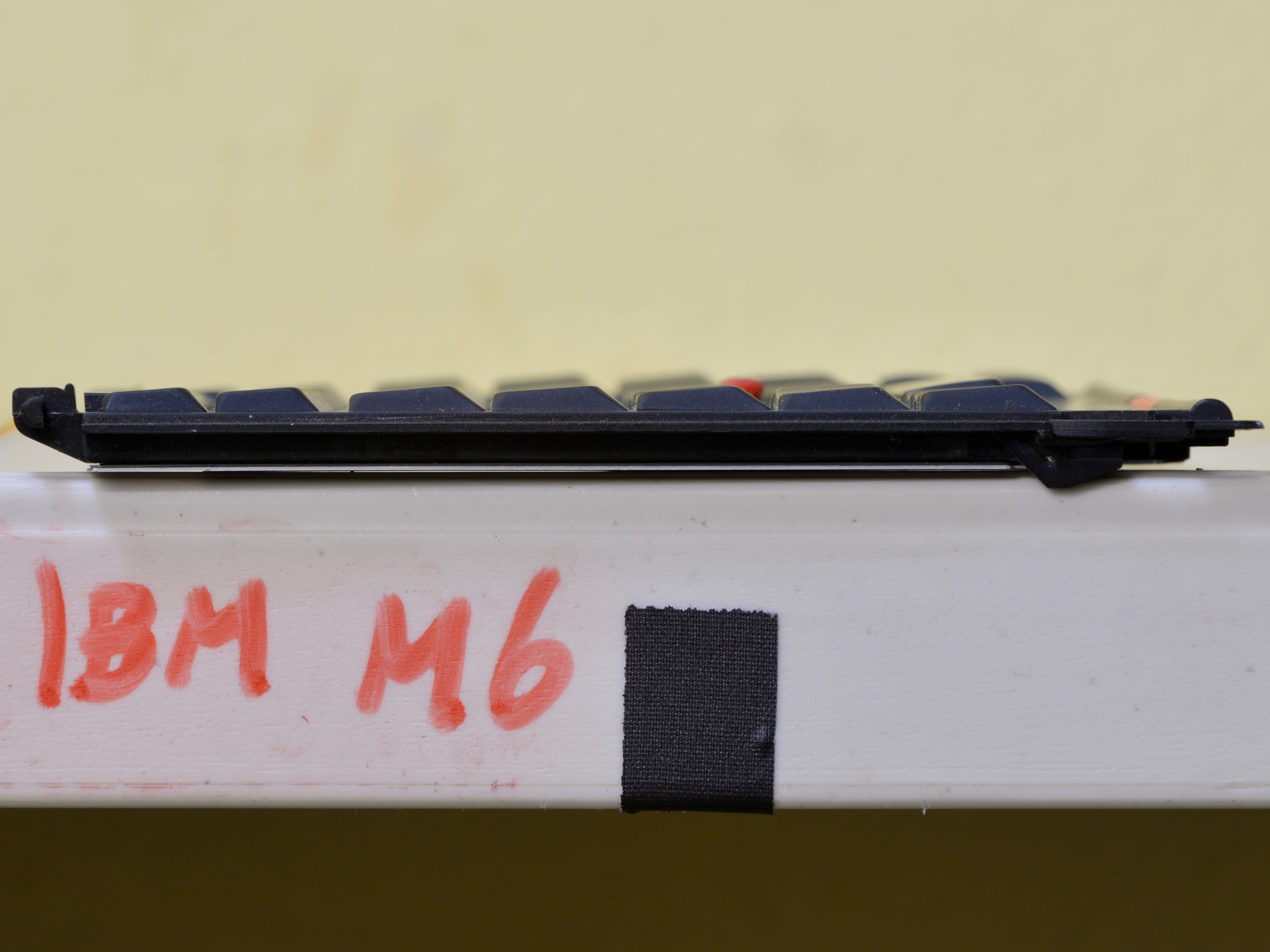
Vintage ThinkPads used a non sculpted low profile keyboard for minimal Z height. Key action is quite good for a laptop keyboard.
IBM Buckling Spring - Model F, Model M
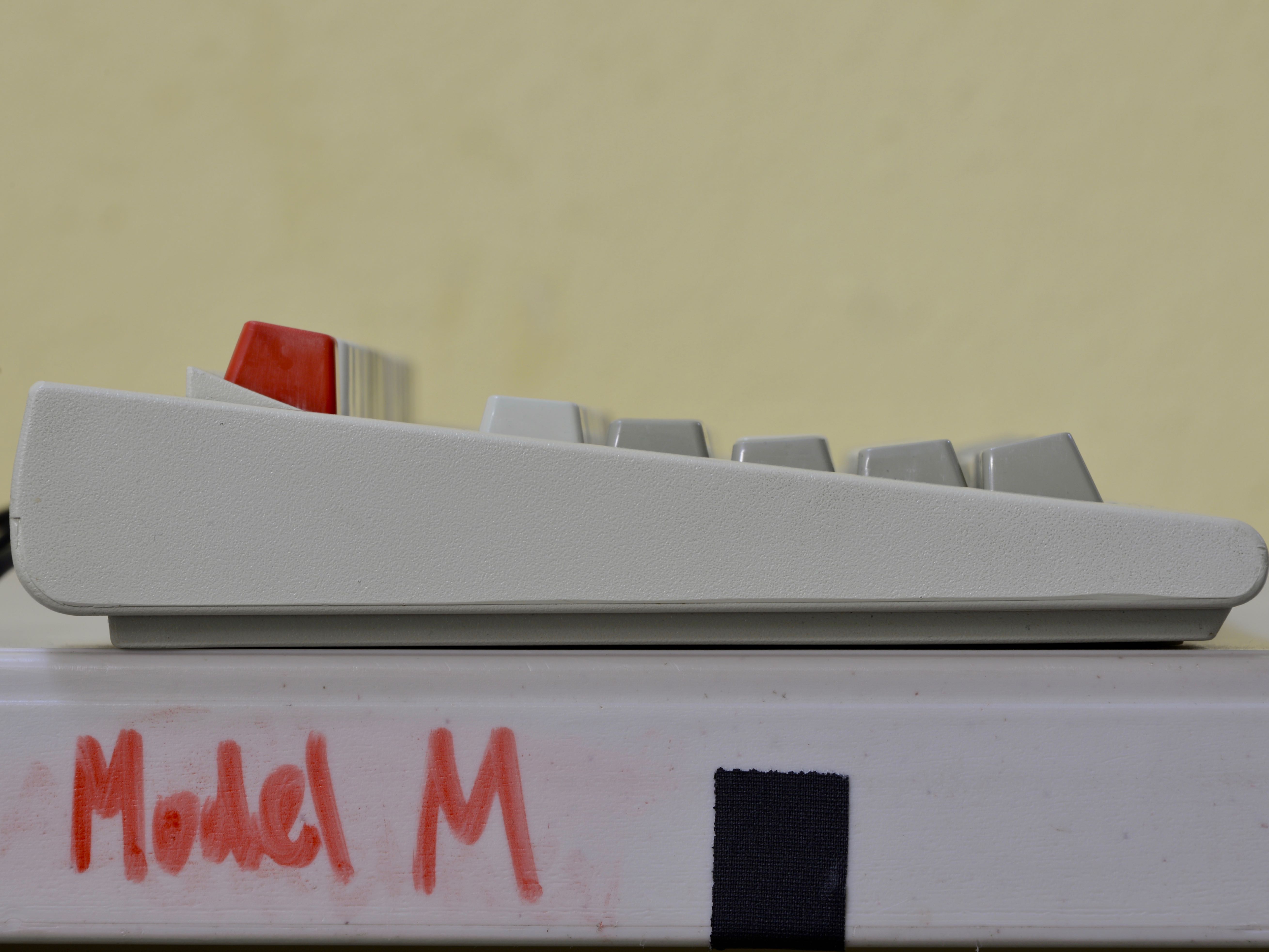
At last, the legendary Model M. This profile works a minor miracle: by using a single key cap profile and a curved plate, not only do we have simple tooling and interchangeable key caps across rows, we also have a pretty decent profile! R5 has more downslope than R4 by necessity but somehow it all works. The only downside is that R0 is way up there. This could perhaps be improved by reducing the Y distance between R0 and R1.
Apple M0110 - Alps High Profile Cylindrical
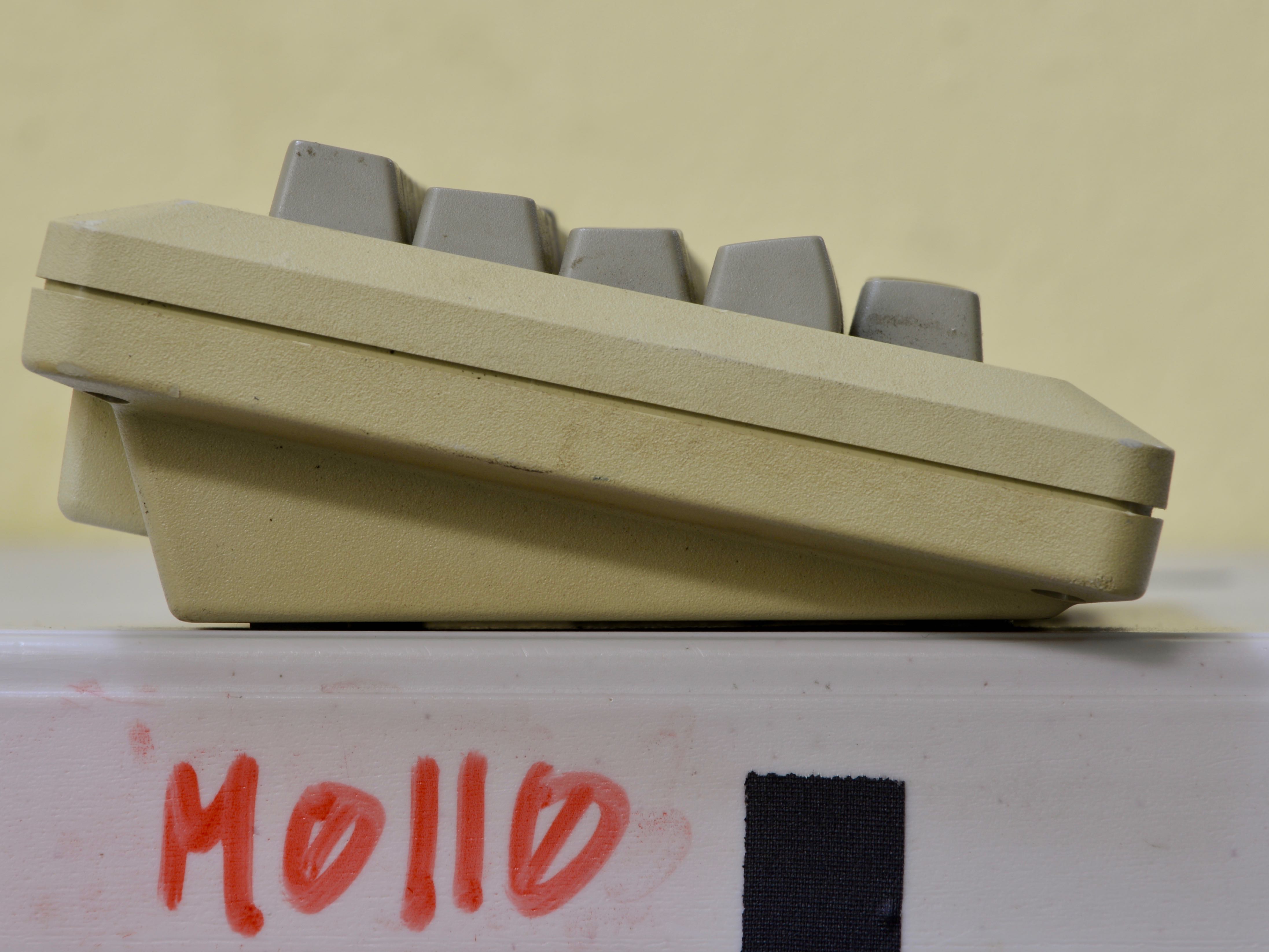
The predecessor to the AEK, the M0110 is a tall keyboard indeed. R3 is about level, R0 is quite tall, and R4 has a moderate downslope. The modifiers are convex. I find the extreme Z height of this board to be a challenge.
Micro Switch Hall Effect High Profile Spherical
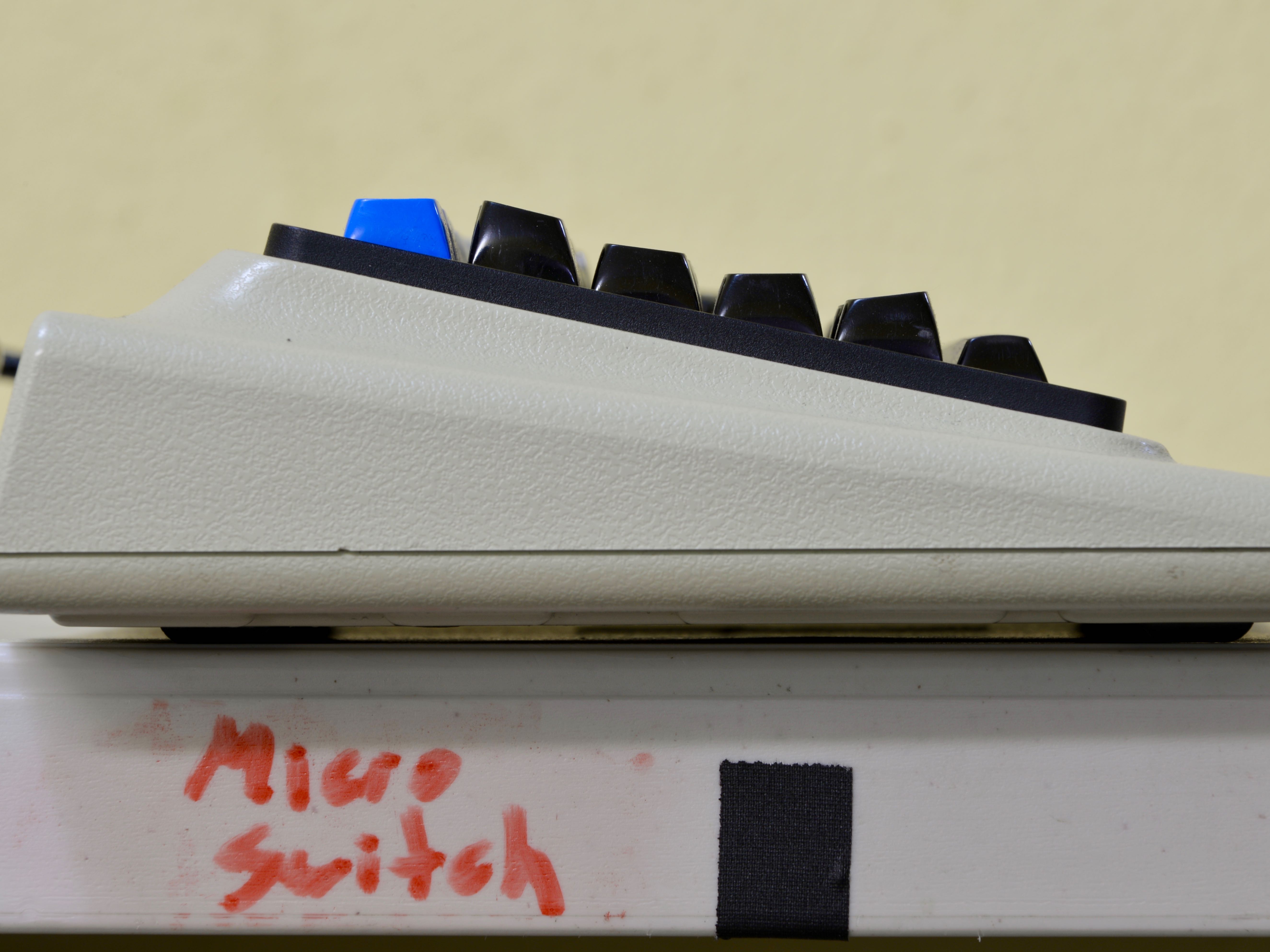
Perhaps the greatest high profile spherical key cap design, at least an equal to the marvelous IBM Selectric and Beamspring design. Note the aggressive positive slope of R1 and the Z height changes across the board. If typewriter is the goal, this hits the mark.
"OEM" Profile - Tai Hao, Others
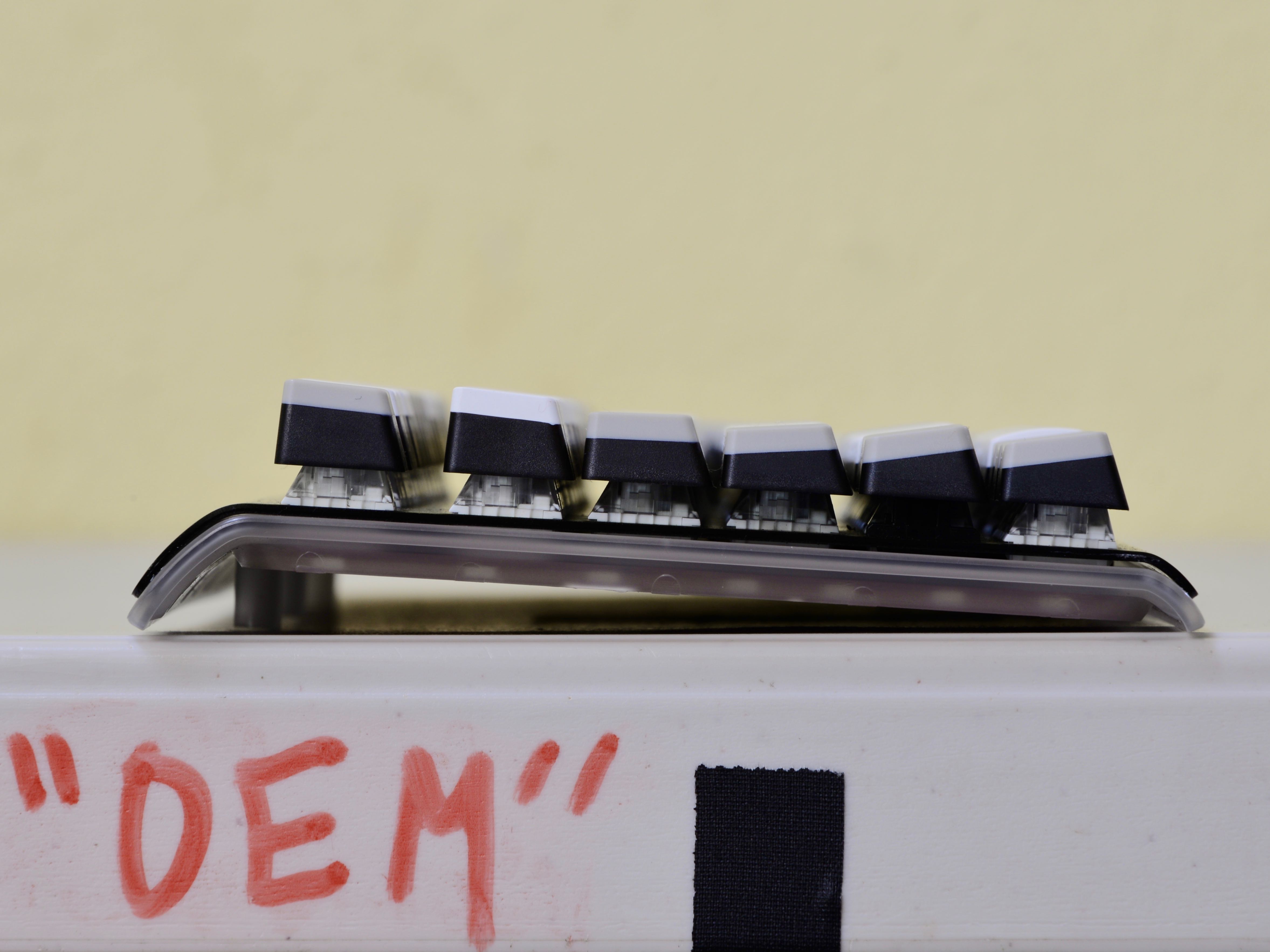
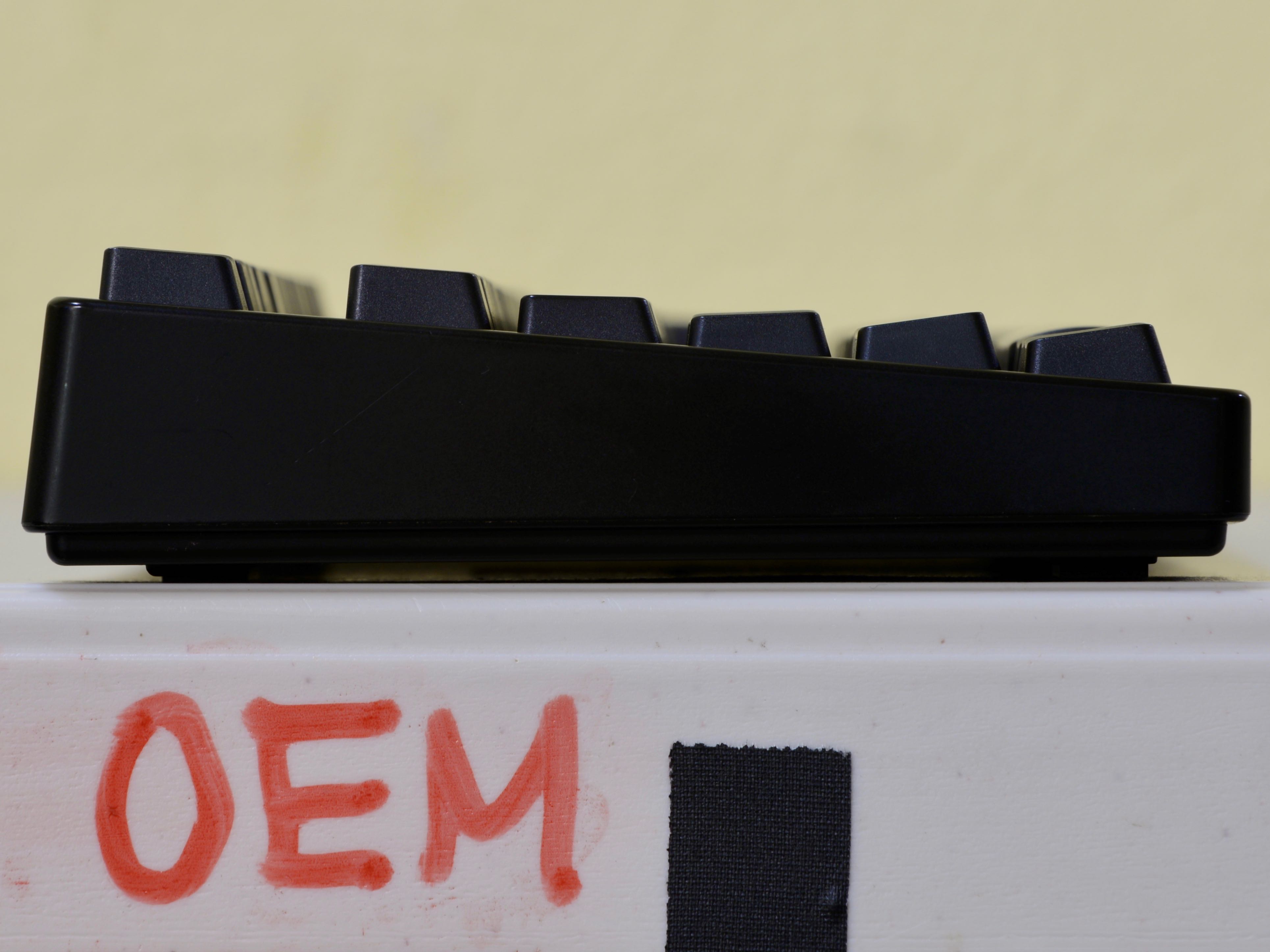
Similar to Cherry profile, but with taller key caps. This is probably the most popular mechanical keyboard profile today and a reasonable default. There are minor, consistent differences in the angle of the rows, with R3 being slightly negative and R4 slightly to moderately negative. It's an excellent starting point but I think we can do better.
Kaihua Choc Low Profile - Cherry ML inspired
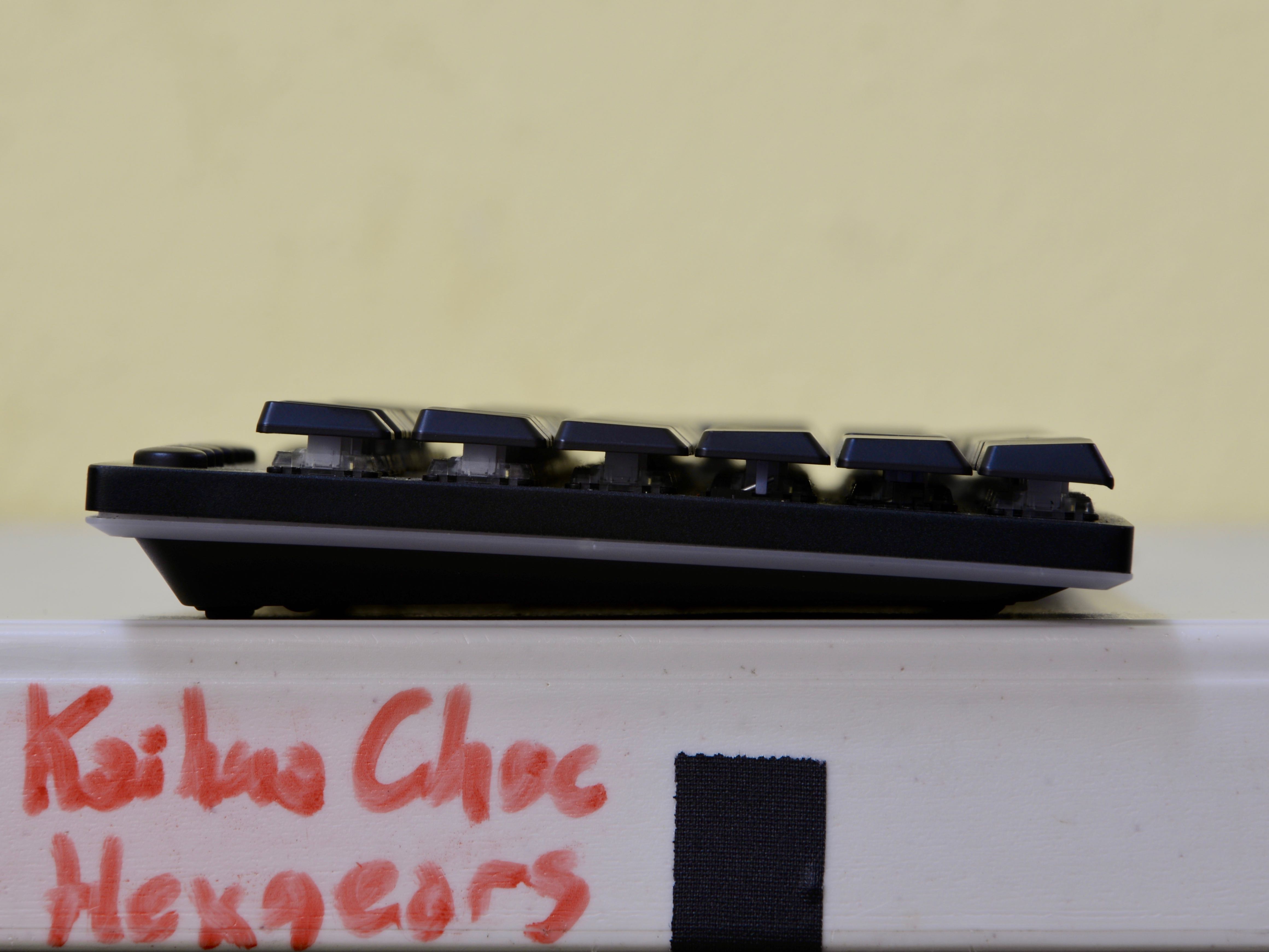
Here we see a profile that attempts to incorporate some amount of sculpting in a reduced Z height. Indeed, R3 is less angled than R2, and R5 even has a slight negative slope. This profile is proof that reduced Z height requirements - like laptops or slimline keyboards - can still feature interesting ergonomic traits. We don't need to be relegated to non-profiled chiclet keyboards!
Teletype Low Profile Spherical
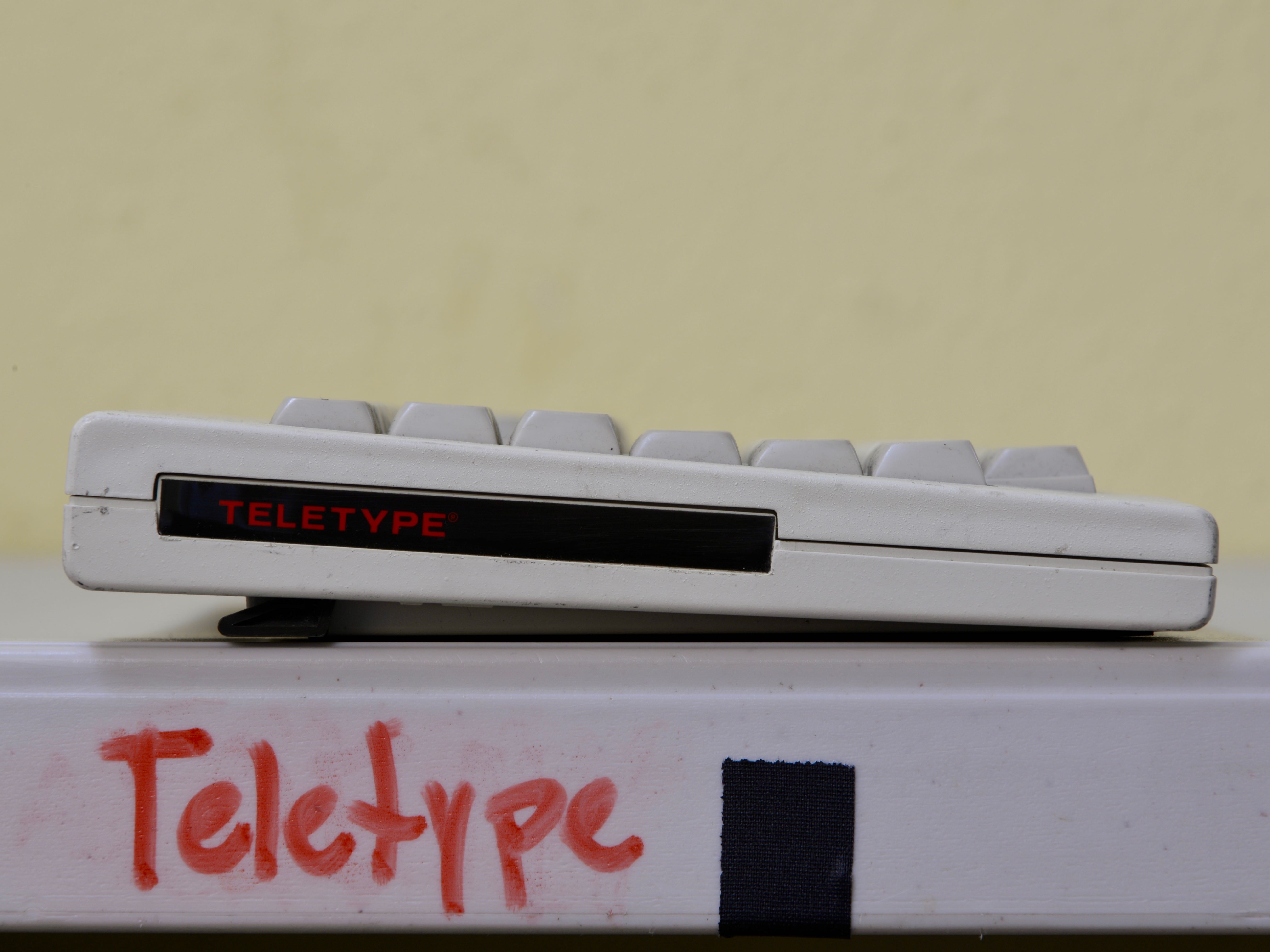
This fascinating board merits its own post. This is the lowest profiled spherical key cap set that I've ever seen. R3 and R4 are just barely down sloped. This board has a pretty low Z height - it's shorter than a TKL in the Z axis.
That ends our whirlwind tour through 23 different key cap profiles. Whew, thanks for reading! Please share your thoughts and questions below! In particular I welcome recommendations for other key cap sets to consider.
